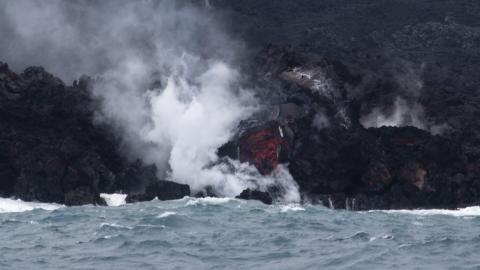New Ocean Science and Exploration Teaching Animations

So how do we explore the ocean? And where did all these underwater mountains come from anyway?
We're excited to debut six new teaching animations designed to explain ocean science and exploration concepts with the help of adorable illustrations. This project was developed with the support of the National Marine Sanctuary Foundation to build out resources linking Central Pacific oceanography concepts with classrooms and enhancing the value of deep-sea exploration expeditions to the K-12 education community.
Did you know that underwater mountains are called seamounts? This teaching animation explains how seamounts - and related features like guyots - are formed by geological processes by examining the Hawaiian Island Chain.
Did you know that the largest migration on Earth actually occurs vertically in the ocean? This teaching animation explains the phenomenon known as diel vertical migration and how it plays an integral role in ocean ecology.
Did you know that we can sample ocean wildlife’s DNA from seawater? This teaching animation describes the new science of studying eDNA- how we collect it and use it to study the global ocean’s biodiversity noninvasively.
Did you know that volcanoes can form at hotspots in the Earth’s crust? This teaching animation displays how seamount chains like the Hawaiian–Emperor seamount chain are formed as tectonic plates move over hotspots.
Did you know that when using ROVs to explore the deep sea, sometimes two are better than one? In this teaching animation, you can learn about the dual-body ROV system used by ocean explorers to safely and efficiently explore the seafloor.
Did you know that you can divide the ocean into five general zones? This teaching animation examines the ocean zones determined based on environmental factors such as light and pressure and what kind of diversity is found in each one.



